編輯:關於Android編程
用到的知識點:
1.Http 協議字段"Range", "bytes="+start+"-"+end
2.RandomAccessFile設置寫入的位置
3.開啟線程發送網絡請求以及線程池操作
首先,在服務器端放一張圖片,如下在WebRoot下放置了一張lufei.jpg圖片
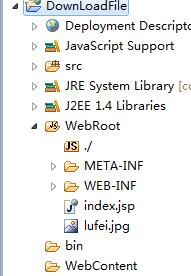
跟訪問網頁一樣通過url直接訪問:http://pc-20141102midc:8080/DownLoadFile/lufei.jpg
然後在Android端寫多線程下載的代碼:
為了防止遺忘現在配置文件中聲明權限:
布局文件:
下載類:
DownLoad.java
package com.example.download_file;
import java.io.File;
import java.io.IOException;
import java.io.InputStream;
import java.io.RandomAccessFile;
import java.net.HttpURLConnection;
import java.net.MalformedURLException;
import java.net.URL;
import java.util.concurrent.Executor;
import java.util.concurrent.Executors;
import android.os.Environment;
import android.os.Handler;
import android.os.Message;
/**
* 多線程下載例子
* @author weichongchong
*
*/
public class DownLoad {
private Handler mHandler;
public DownLoad(Handler handle){
this.mHandler= handle;
}
//通過線程池下載,創建線程池對象
private Executor threadPool = Executors.newFixedThreadPool(3);//創建三個線程池
static class DownLoadRunnable implements Runnable{
private String url;
private String fileName;
private long start;
private long end;
private Handler handler;
public DownLoadRunnable(String url ,String fileName,long start,long end,Handler handler ){
this.url=url;
this.fileName = fileName;
this.start = start;
this.end = end;
this.handler= handler;
}
@Override
public void run() {
// TODO Auto-generated method stub
try {
URL httpUrl = new URL(url);
HttpURLConnection conn = (HttpURLConnection) httpUrl.openConnection();
conn.setReadTimeout(5000);
conn.setRequestProperty("Range", "bytes="+start+"-"+end);//指定長度
conn.setRequestMethod("GET");
//創建隨機讀取流進行讀取
RandomAccessFile access = new RandomAccessFile(new File(fileName), "rwd");//第二個參數代表可讀,可寫,可執行
access.seek(start);
InputStream in = conn.getInputStream();
byte[] b = new byte[1024*4];
int len=0;
while((len = in.read())!=-1){
access.write(b,0,len);
}
if(access!=null){
access.close();
}
if(in!=null){
in.close();
}
//下載完成通知更新UI
Message message = new Message();
message.what=1;
handler.sendMessage(message);
// int count = conn.getContentLength();//拿到下載對象的長度
// int block = count/3;//平均到每個線程池
} catch (MalformedURLException e) {
// TODO Auto-generated catch block
e.printStackTrace();
} catch (IOException e) {
// TODO Auto-generated catch block
e.printStackTrace();
}
}
}
public void downLoadFile(String url){
try {
URL httpUrl = new URL(url);
HttpURLConnection conn = (HttpURLConnection) httpUrl.openConnection();
conn.setReadTimeout(5000);
conn.setRequestMethod("GET");
int count = conn.getContentLength();//拿到下載對象的長度
int block = count/3;//平均到每個線程池
String fileName = getFileName(url);
// File parent = Environment.getExternalStorageDirectory();
// File fileDownLoad = new File(parent,fileName);
File fileDownLoad = new File(Environment.getExternalStoragePublicDirectory(Environment.DIRECTORY_PICTURES),fileName);
/**
* 11/3 3
* 第一個線程0-2
* 第二個3-5
* 第三個6-10
*/
for(int i=0;i<3;i++){
long start = i*block;
long end = (i+1)*block-1;
if(i==2){
end=count;
}
DownLoadRunnable runnable = new DownLoadRunnable(url,fileDownLoad.getAbsolutePath(),start,end,mHandler);
threadPool.execute(runnable);//通過線程池提交任務
}
} catch (MalformedURLException e) {
// TODO Auto-generated catch block
e.printStackTrace();
} catch (IOException e) {
// TODO Auto-generated catch block
e.printStackTrace();
}
}
/**
*
* @return
* 得到url後綴名,即文件名
*/
public String getFileName(String url){
return url.substring(url.lastIndexOf("/")+1);
}
}
package com.example.download_file;
import android.app.Activity;
import android.os.Bundle;
import android.os.Handler;
import android.view.Menu;
import android.view.MenuItem;
import android.view.View;
import android.view.View.OnClickListener;
import android.widget.Button;
import android.widget.TextView;
import android.widget.Toast;
public class MainActivity extends Activity {
private Button start_download_bt;
private TextView mytv;
private int count = 0;
private Handler mHandler = new Handler(){
public void handleMessage(android.os.Message msg) {
int result = msg.what;
count+=result;//如果三個線程都下載完成,都返回一個1,相加為3
if(count==3){
mytv.setText("下載完成");
start_download_bt.setText("下載完成");
}
};
};
@Override
protected void onCreate(Bundle savedInstanceState) {
super.onCreate(savedInstanceState);
setContentView(R.layout.activity_main);
start_download_bt = (Button) findViewById(R.id.start_download_bt);
mytv = (TextView) findViewById(R.id.my_tv);
start_download_bt.setOnClickListener(new OnClickListener() {
@Override
public void onClick(View v) {
// TODO Auto-generated method stub
start_download_bt.setText("正在下載");
Toast.makeText(MainActivity.this, "正在下載", 0).show();
new Thread(){
@Override
public void run() {
// TODO Auto-generated method stub
DownLoad mDownLoad = new DownLoad(mHandler);
mDownLoad.downLoadFile("http://192.168.1.105:8080/DownLoadFile/lufei.jpg");
}
}.start();
}
});
}
}
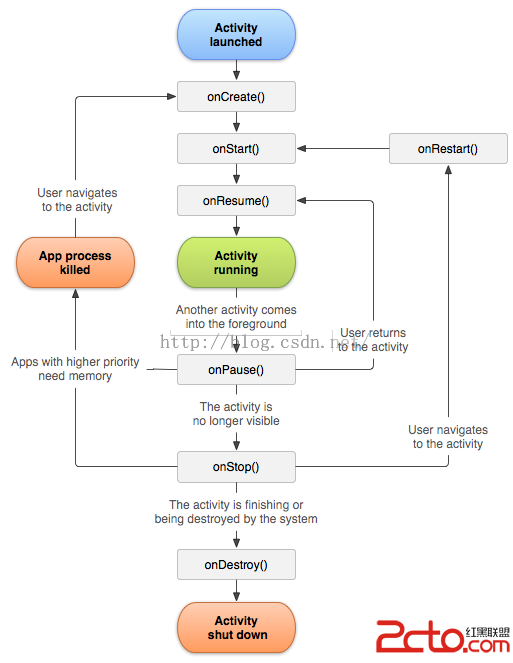 [Android基礎]Activity的生命周期
[Android基礎]Activity的生命周期
今天面試被問及了一個問題:Activity A、Activity B,Activity A 被B覆蓋的時候,Activity生命周期中哪幾個方法被調用了?Activity
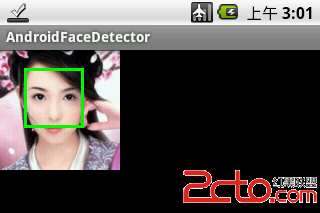 Android多媒體-人臉識別
Android多媒體-人臉識別
1. 相關背景 Google 於2006年8月收購Neven Vision 公司 (該公司擁有 10 多項應用於移動設備領域的圖像識別的專利),以此獲得了圖像識別的技術
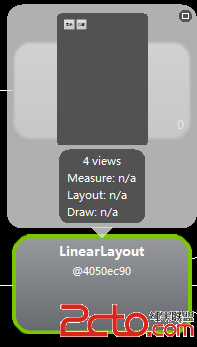 Android 布局優化工具Hierarchy Viewer的使用
Android 布局優化工具Hierarchy Viewer的使用
網上已經有很多關於Hierarchy Viewer如何使用的文章,這裡就不一步步的演示具體怎樣使用了,ddna兄的《【Android工具】被忽
 退出應用的第N+1種方法-一行代碼退出應用
退出應用的第N+1種方法-一行代碼退出應用
前N種方法之前有在網上了解過退出應用的方法,其中包括在每個activity中注冊關閉界面的廣播接受者,當想推出應用時發一條廣播關閉所有的界面,最常用的使用list去模擬任
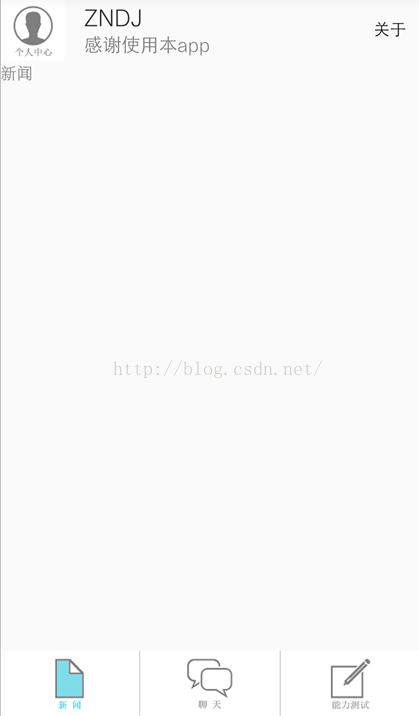 Android,底部導航+viewpager+fragment+drawerlayout+toolbar+recyclerview
Android,底部導航+viewpager+fragment+drawerlayout+toolbar+recyclerview
將自己的編程經歷寫出來是個好習慣先來效果圖:項目結構:1、底部導航底部導